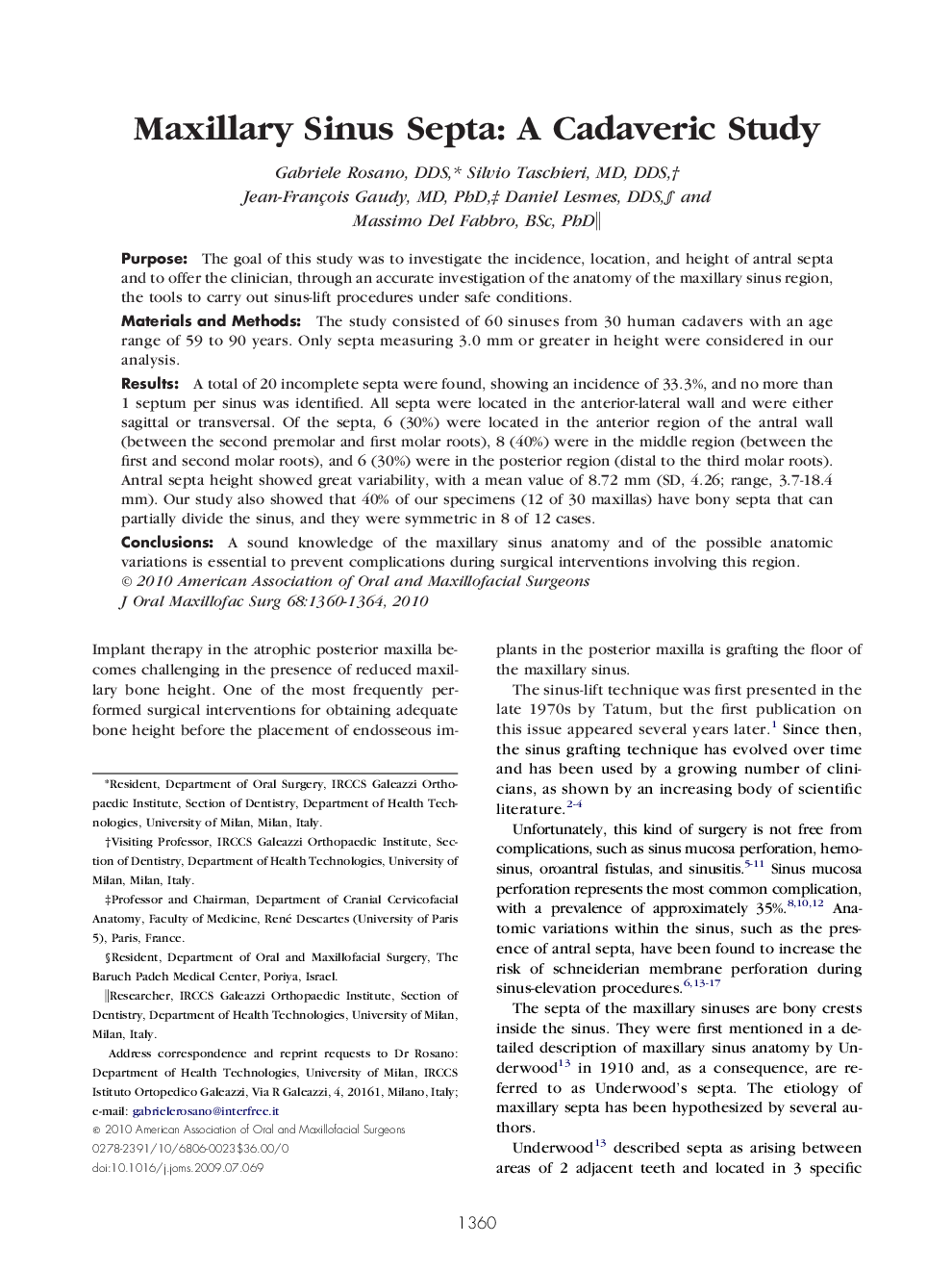| Article ID | Journal | Published Year | Pages | File Type |
|---|---|---|---|---|
| 3157136 | Journal of Oral and Maxillofacial Surgery | 2010 | 5 Pages |
PurposeThe goal of this study was to investigate the incidence, location, and height of antral septa and to offer the clinician, through an accurate investigation of the anatomy of the maxillary sinus region, the tools to carry out sinus-lift procedures under safe conditions.Materials and MethodsThe study consisted of 60 sinuses from 30 human cadavers with an age range of 59 to 90 years. Only septa measuring 3.0 mm or greater in height were considered in our analysis.ResultsA total of 20 incomplete septa were found, showing an incidence of 33.3%, and no more than 1 septum per sinus was identified. All septa were located in the anterior-lateral wall and were either sagittal or transversal. Of the septa, 6 (30%) were located in the anterior region of the antral wall (between the second premolar and first molar roots), 8 (40%) were in the middle region (between the first and second molar roots), and 6 (30%) were in the posterior region (distal to the third molar roots). Antral septa height showed great variability, with a mean value of 8.72 mm (SD, 4.26; range, 3.7-18.4 mm). Our study also showed that 40% of our specimens (12 of 30 maxillas) have bony septa that can partially divide the sinus, and they were symmetric in 8 of 12 cases.ConclusionsA sound knowledge of the maxillary sinus anatomy and of the possible anatomic variations is essential to prevent complications during surgical interventions involving this region.
